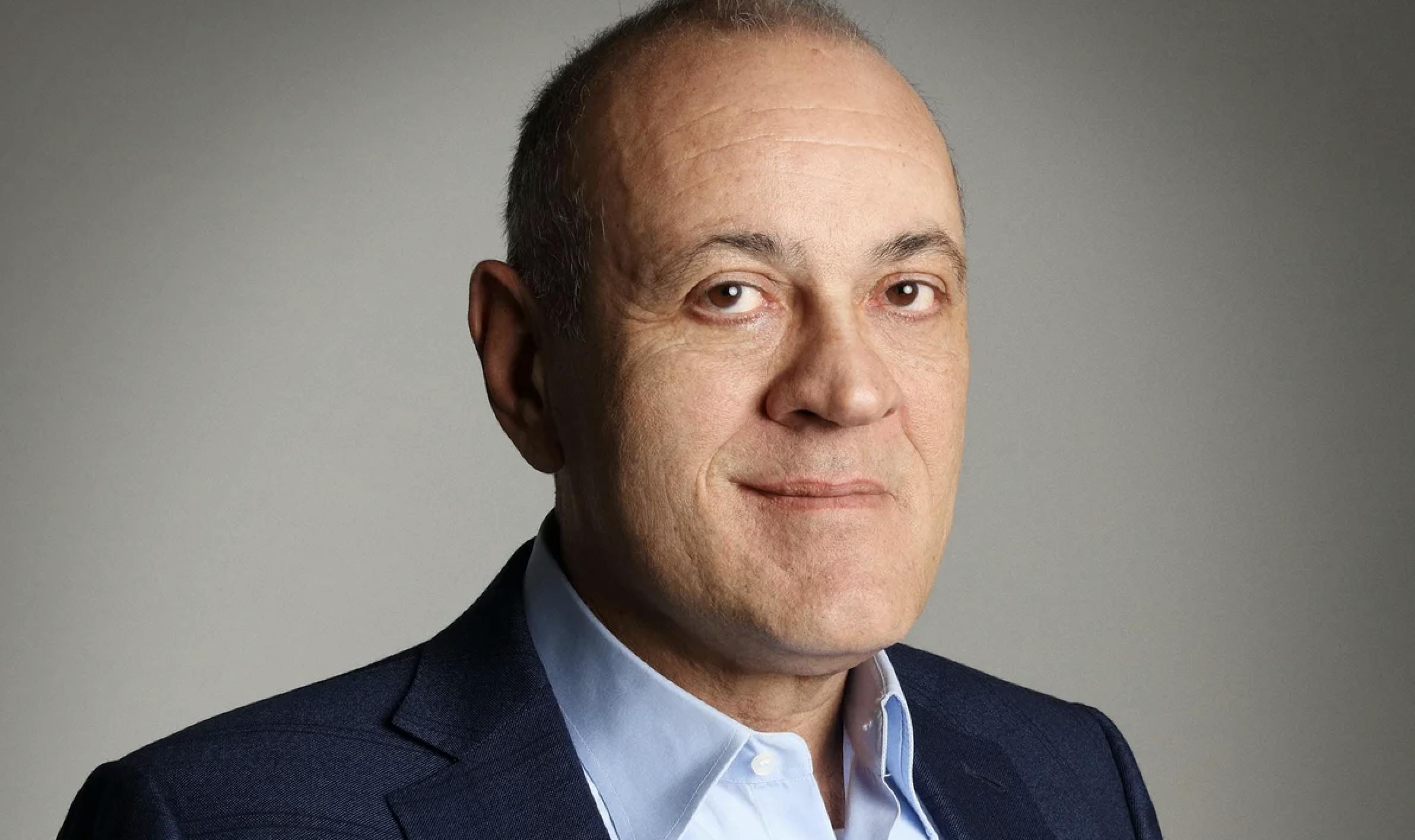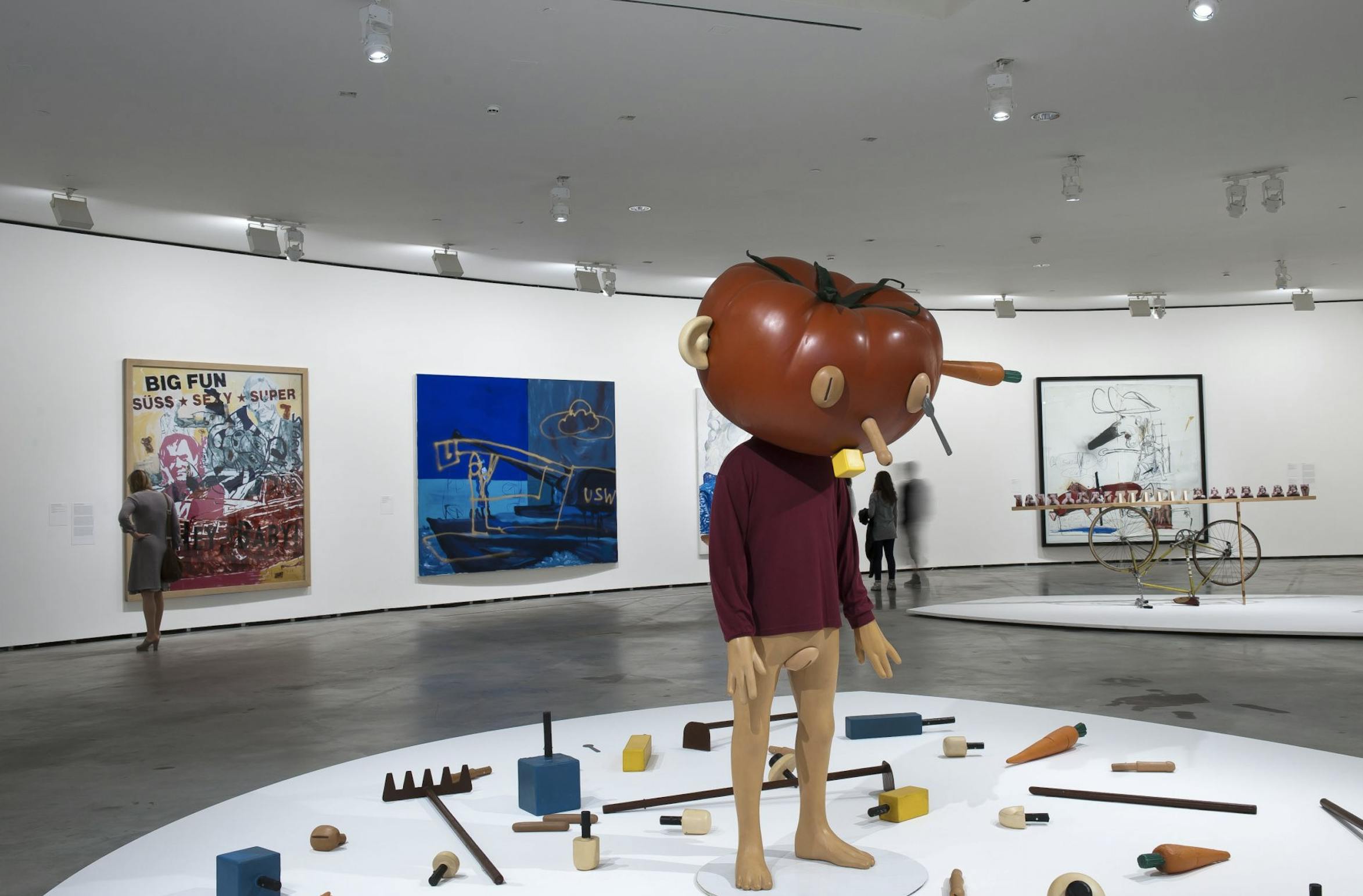Dimitris Daskalopoulos: communicating and transforming spaces through art

For more than four decades Greek contemporary art collector Dimitris Daskalopoulos has been an influential figure in the art world. Next to owning an impressive collection of international contemporary artworks, he is also deeply invested in several contemporary art museums and is a committed patron of cultural spaces and public art projects through his nonprofit foundation, NEON. This article takes a look at Daskalopoulos' collecting practice, and explores some of the cultural projects his foundation has recently activated across Athens.
Dimitris Daskalopoulos (Athens, 1957) was born in a working-class family. After studying Management at the Athens School of Management and the Kellogg Graduate School of Management he turned his family’s dairy business, Vivartia, into Greece’s largest food empire with leading brands in dairy, bakery, frozen foods, and restaurants and 13,000 employees in 29 countries. In addition to his successful role at Vivartia, Dimitris also served as the chairman of the Federation of Greek Food Industries and is also the founder and chairman of DAMMA Holdings (financial services and investment firm), and of diaNEOsis (think tank researching social and economic issues in Greece), Artsy reported.
Why and how Dimitis started collecting art?
From a young age, Dimitris was an admirer of art and a well travelled individual visiting museums around the world. For example, he has repeatedly shared a story of him spending two hours completely spellbound by Rubens’ paintings at the Alte Pinakothek in Munich when he was only twelve. As years went by, he visited more museums and bought his first artwork, a small bronze statue, on a trip through Thailand when he was eighteen.
As he stated in an interview with Art Territory, during the first stages of his long-lasting journey as an art collector, he focused on Greek painting from the 1950s, and only turned to international contemporary art in the early 1990s when he was forty. The first piece of contemporary art he bought was the kinetic sculpture, The Painting in the Inner Egg (1993) by Rebecca Horn, which inspired his future endeavors as an international contemporary art collector.
Daskalopoulos’ philosophical interests and collecting principles
During most of the 1990s, Dimitris bought the contemporary artworks that called his attention and managed to stay under the radar of the art world for around ten years. However, soon enough he found a thematic unit that tied his acquisitions together and which connects to his own philosophical and existential interests. Particularly, for years he has been influenced by the works of the renowned Greek philosopher and writer Nikos Kazantzakis, who, as he explained in an interview, spoke of life as a “luminous interval” between birth and death with the human body at its center as a “source of creativity and the vessel of existential, social and ideological struggle.” Inspired by these ideas, Dimitris has travelled the world looking for international artworks across different mediums and formats that explore the struggle between human fragility and human strength and creativity.
Next to guiding his acquisitions by a philosophical approach, Dimitris has constantly reflected on his collecting practice; drawing from the etymological root of the Greek word collect (συλλέγω) which means “saying something with” and making his mission to amass a collection that is far reaching and diverse.Likewise, as stated on his collection´s website, one of the most important guiding principles of his collection is the belief that art should “be disseminated to as wide a public as possible instead of lingering in dark storage crates,”which allows for a unique lending practice which affords museums and institutions to borrow from his collection whenever they would like to exhibit one of his works. Dimitris has loaned over 200 artworks to more than 120 international institutions over the last 25 years.

Daskalopoulos' collection exhibition at the Guggenheim Museum Bilbao in Spain, 2011
Now, regarding the selection process, contrary to other contemporary art collectors, Dimitris likes for the artwork to speak for itself and does not require meetings with the artist to finalize his decision to acquire a new piece. Although he has a team of art consultants who keep him apprised of prospective artists and themes, Dimitris likes to rely on emotions and bodily reactions when standing in front of an artwork.
The holdings of the D. Daskalopoulos Collection: a completed project
Dimitris’ distinctive collecting methods and principles have proven successful given the D. Daskalopoulos Collection, which has been assembled since 1994, comprises over 500 works by 220 international artists such as Matthew Barney, Lynda Benglis, John Bock, Paul Chan, Robert Gober, David Hammons,Mona Hatoum, Damien Hirst, Martin Kippenberger, Mike Kelley, Paul McCarthy, Annette Messager, Bruce Nauman, Paul Pfeiffer, and Kiki Smith. While reflecting on key aesthetic developments over the last quarter-century, the collection also includes pieces from the early 20th century such as works by Marina Abramović, Joseph Beuys, Gilbert and George, Robert Morris, and Dieter Roth. As Artsy explained, among the most important works in this collection are Marcel Duchamp’s readymade Fountain (1917/1964), which is a seminal piece of art history, and Louise Bourgeois’ sculpture Fillette (Sweeter Version) (1968–99), which the collector has lent to the Tate since 2005.
Importantly, a great part of the Daskalopoulos Collection are the large-scale sculptures and installations which speak to the philosophical interests mentioned above, and which also entail all sorts of logistical, conservation, storage, exhibition, and transportation challenges. Dimitris’ choice of artworks strongly relates to his interest in communicating something through whatever formats and mediums the artists are using, regardless if that object will fit in a house or not. He once said to Artsy, “I never bought to decorate my walls. I put artworks in dialogue that I thought represented what artists wanted to do.”
As he shared with ARTnet news in a 2014 interview, up until recently the collector acquired about 20 works a year and tried to expand his holdings of artists he has long supported. However, in 2019, he decided to stop adding works to his collection and is currently focused on sharing it and ensuring its long-term integrity. “I believe that my collection has formed its character completely and there is nothing to add to that discourse now, so buying more artworks is senseless accumulation, which is the danger of being a collector,” he said to Artsy, adding, “My collection is big enough and important enough that it requires attention to what will happen to it in the future, and that is a responsibility of a collector. I find it may be just as fascinating as collecting itself.”
Dimitris: Museum patron and founder of a nomadic cultural organization
Side by side with his collecting practice, Dimitris is also a patron of the arts and has s important roles across influential museums around the world. He is currently the Vice President of the Board of Trustees and Chairman of the Collections Council of the Solomon R. Guggenheim Foundation. Likewise, he has contributed to a discretionary curators’ fund for acquisitions and created a curatorial post for contemporary art at the Guggenheim Museum. He has also created a post for The Daskalopoulos Senior Curator, International Art (Africa, Asia & Middle East), at Tate. At the same time, he is an active member of the Board of Trustees of the Museum of Contemporary Art Chicago and the Tate International Council.
Adding on, in 2012, Daskalopoulos founded the Athens-based art foundation NEON, which stages free exhibitions and other cultural events and programs to present contemporary art to a broader audience in Greece. As Dimitris shared in an interview with Greece Is, rather than creating a private museum, this collector opted for creating a “nomadic” cultural organization “by conscious choice.” To get a glimpse of the reach of this project, The New York Times explained that throughout its history the organization has staged 28 exhibitions in 25 different venues in collaboration with public and private entities in Greece and abroad drawing mainly from the collector's collection and also by commissioning new works.
Another important component of this organization’s mission is to create public art projects within Greece which are commissioned annually by a Greek artist. Particularly, NEON City Projects has activated emblematic historical places and archeological sites through contemporary art. For example, in June 2020, it inaugurated a newly commissioned site-specific installation by Greek artist Dionisis Kavallieratos at the Odeon of Herod Atticus, in Athens.
Next to these efforts, NEON has also resurrected different spaces of historic value across Greece by turning them into cultural centers that are then gifted back to the city. For example, in 2016, on behalf of the government, the organization converted the basement of the Athens Conservatory, which had been empty for many years, into an exhibition space that has remained under the school’s governance.
NEON’s latest project is the restoration of a former Public Tobacco Factory – Hellenic Parliament Library & Printing House, in Athens, which was constructed in 1930, and was used as a tobacco company until 1995. As Artsy explained, NEON’s in-house architect, Fanis Kafantaris, transformed this venue into a permanent contemporary cultural and social space with a minimal and functional approach. The resulting 1.2-million-euro project, funded entirely by NEON, was given back to the Parliament. In an interview with Forbes, Elina Kountouri, NEON´s Managing Director, specified “The space does not belong to NEON. We are the “caretakers” until 2022,” so only up until this time will the foundation propose the programming and then it is up to the city. As stated in NEON´s website, last June the cultural space was inaugurated by an international group exhibition, Portals, featuring 59 artists from 27 countries including 15 new site-specific installations commissioned by NEON.
Surely in the following years, we will continue to see a myriad of temporary exhibitions reinterpreting the holdings of the D. Daskalopoulos Collection, and more historical and public spaces will be transformed and activated within Greece through NEON. Without a doubt, the philosophical, structured, socially conscious, and nationalistic approach that Dimitiris Daskalopoulos has to art collecting and art patronage will leave a long-lasting impression on Athens and the art world abroad.